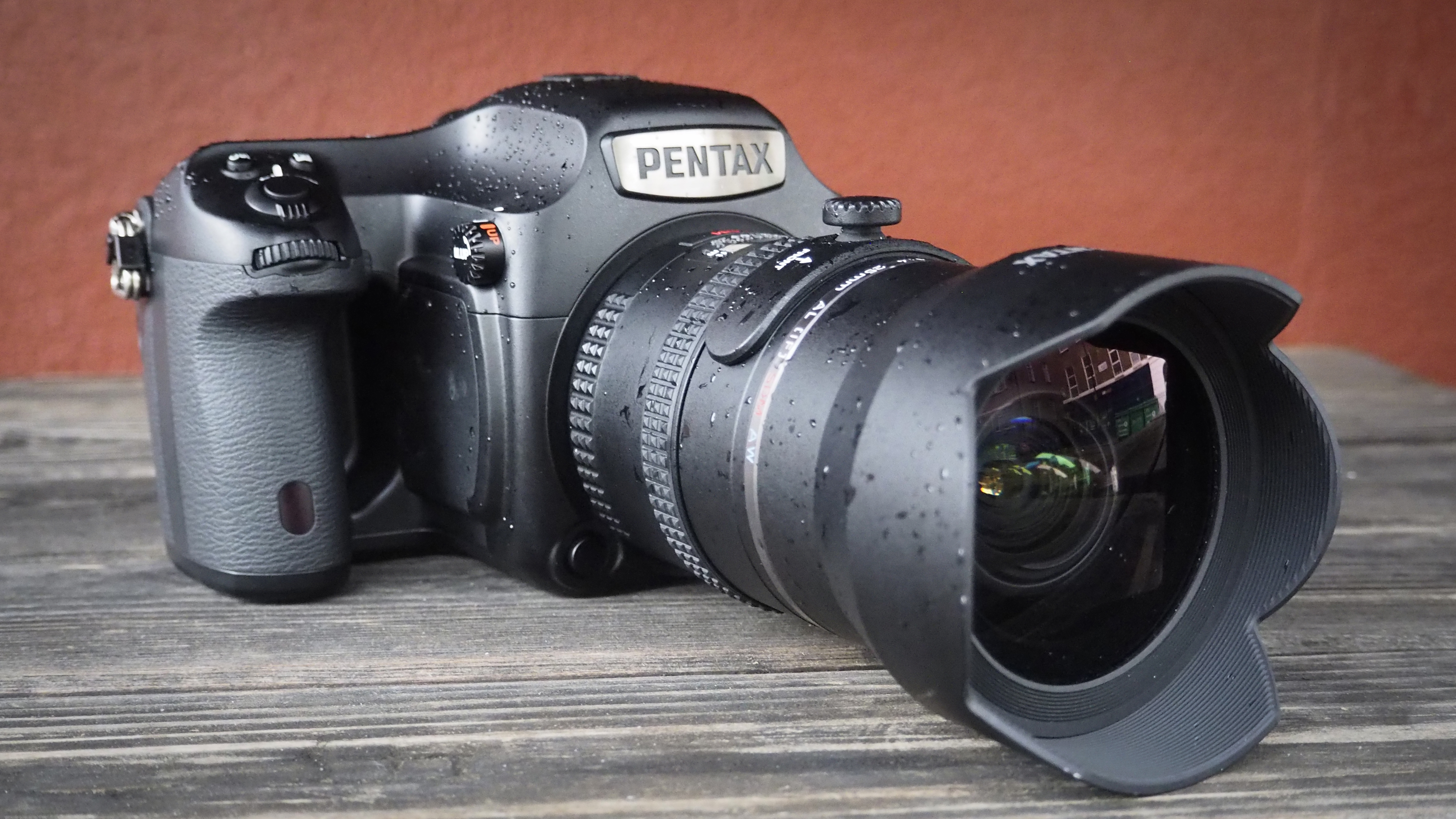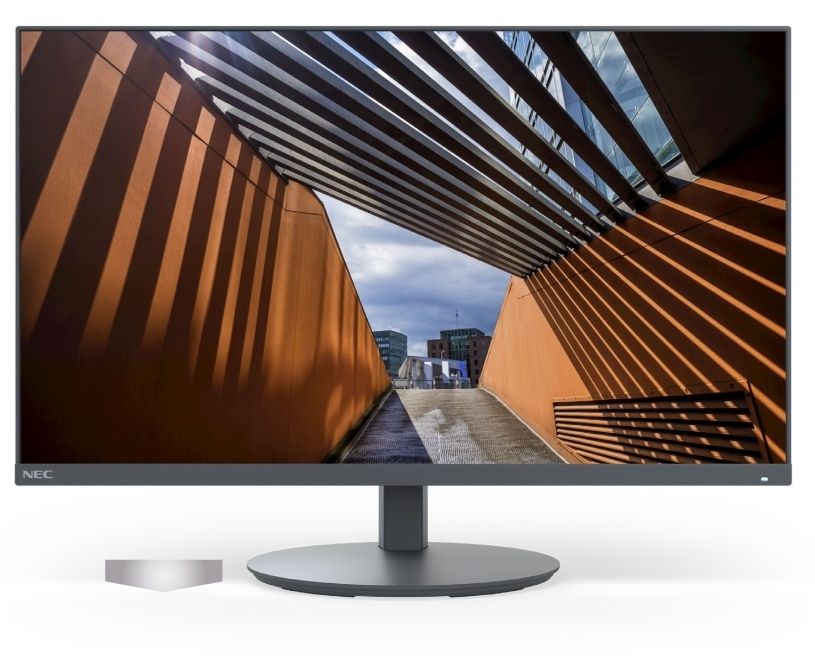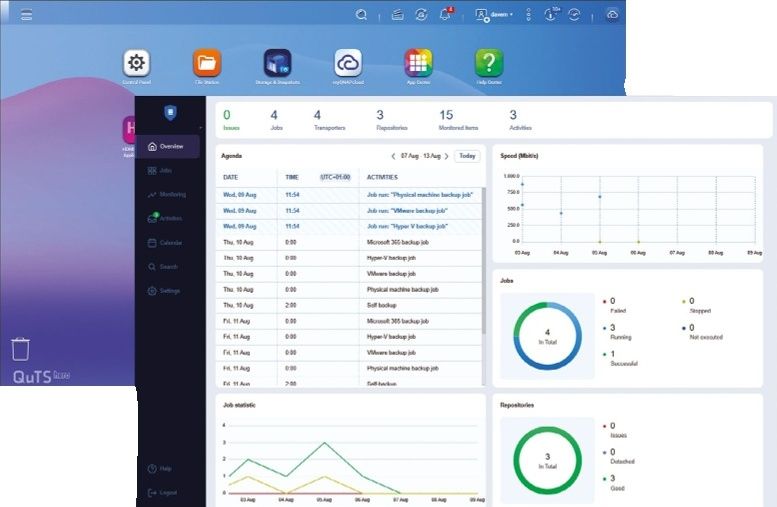Why you can trust TechRadar
We shoot a specially designed chart in carefully controlled conditions and the resulting images are analysed using DXO Analyzer software to generate the data to produce the graphs below.
A high signal to noise ratio (SNR) indicates a cleaner and better quality image.
For more more details on how to interpret our test data, check out our full explanation of our noise and dynamic range tests.
Here we compare the Pentax 645Z to the Nikon D810, Canon 5D Mk III and Sony Alpha 7R.
JPEG signal to noise ratio
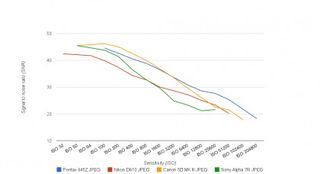
At the 645Z's base ISO100 sensitivity, its 51.4MP sensor manages to produce cleaner images than the 36.3MP D810 and 36.4MP Alpha 7R. The 22.3MP 5D Mark III is the camera to beat though, providing the highest signal to noise ratio up to ISO1600. At ISO3200 Pentax takes the lead and the gap widens as sensor sensitivities increase, demonstrating the 645Z's ability to generate clean images in low light.
Raw signal to noise ratio
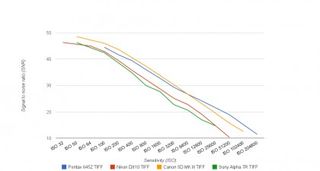
Analysing the 645Z's raw files (after conversion to TIFF) we see the same trend as shown in the JPEG results, with Pentax and Canon vying for top honours. At ISO100 the D810 and Alpha 7R are close rivals, but images become progressively noisier than those from the 645Z at higher sensitivities. This could be due in part to the 645Z's sensor being comprised of larger (5.3-micron) photosites offering potentially higher light sensitivity than the 4.88-micron photosites on the D810 and Alpha 7R's sensors.
JPEG dynamic range
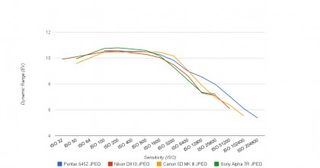
All the cameras manage very high JPEG dynamic range scores and are evenly matched up to ISO1600. Here the D810 and Alpha 7R's scores start to fall more sharply than the 645Z and 5D Mark III's results, which in turn follow the same trend at ISO3200. At ISO6400 the 645Z starts to establish a clear lead and maintains it up to its maximum ISO204,800 sensitivity.
Raw dynamic range
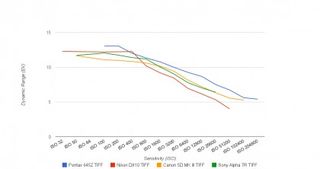
Converting raw files to TIFF for analysis reveals more pronounced differences in dynamic range than JPEG images reveal. Here the 645Z is clearly superior to the full-frame competition throughout the sensitivity range, indicating that it's capable of recording the widest range of tones.
Current page: Noise and dynamic range
Prev Page Image quality and resolution Next Page Sensitivity and noise images
Nintendo's latest FCC filing hints at a Nintendo Switch 2 Pro Controller featuring a headphone jack

Why US third-party vendors need to act fast on DORA compliance

Forget the Nintendo Switch 2 – I’m more excited that Microsoft could be making Windows 11 gaming handhelds even better with a new ‘handheld mode’
